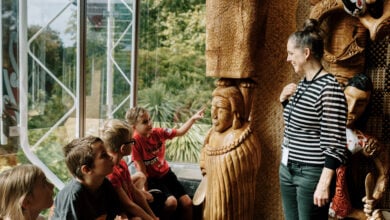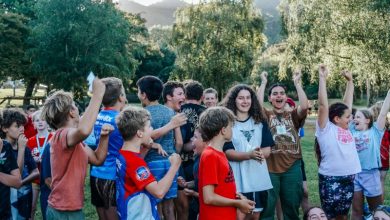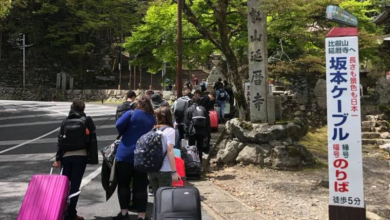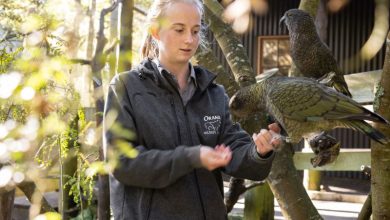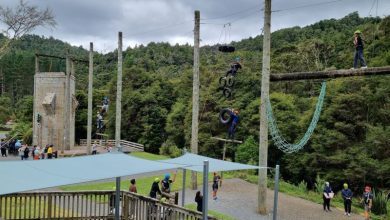City of sails
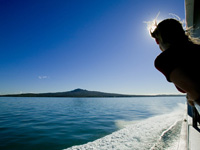
 Talk to many adults about their time at school and it is often the trips to places that made learning come alive that stick in the mind. Characters in costume explaining the history of a city, interactive exhibits that you could touch and play with, observing animals in their natural environments all add richness and depth to the learning experience.
Talk to many adults about their time at school and it is often the trips to places that made learning come alive that stick in the mind. Characters in costume explaining the history of a city, interactive exhibits that you could touch and play with, observing animals in their natural environments all add richness and depth to the learning experience.
Today, students have access to a vast selection of attractions that offer memorable learning experiences. And New Zealand’s largest city, Auckland, has its fair share of those attractions.
Commonly referred to as the City of Sails, Auckland and Aucklanders have long had an association with the water. Voyager, the Maritime Museum, located right on the waterfront, brings alive these stories of the sea. From examining the ancient skills and technology of Polynesian voyagers and understanding how to use basic navigation equipment, to learning the basic principles of floating and sinking and discovering the journeys early settlers took to get to New Zealand, the museum’s 16 education programmes work in tandem with the current curriculum.
 |
| Auckland Dockline Tram |
 |
| Maritime Museum |
 |
| Teamwork is fun at Voyager |
 |
| Fullers 360 tours |
One of Voyager’s most popular programmes is Immigration Stories, where students can stay overnight in the museum’s rocking cabin and enjoy an immigrants meal of stew and bread. Students are also encouraged to sleep top and tail in the cabins to get a true sense of what it was like for early settlers.
The museum’s educators, both former teachers themselves, can also develop one off programmes for schools, says Karen Walters, Voyager’s life long learning manager. “A recent example is a school we had through that was studying the Olympics so we dug out all the items Barbara Kendall has loaned the museum and tailored a learning programme just for that school.”
Voyager’s education programmes provide interactive, hands on learning opportunities for students, teachers and parents. “We don’t do worksheets,” says Walters. “We want our programmes to be memorable and worksheets can detract from that.”
The location of Voyager, right in the heart of Auckland’s Viaduct, means many other attractions are available within walking distance, including the new Auckland Dockline Trams route.
The Auckland Dockline Tram runs on a 15 minute loop of Halsey, Gaunt, Daldy and Jellicoe Streets taking in a number of sights along the way – from the newly refurbished North Wharf and Silo Park, to the site of the original tram shed and the largest marina in the Southern hemisphere at Westhaven.
A number of education programmes exploring the growth of a city, planning and design, sustainability, and transport development have been designed for students of all ages.
“By examining the tram routes, students can see how the city of Auckland developed,” says James Duncan, operations manager of the Auckland Dockline Tram. “They can see, for example, how Dominion Rd stopped at the junction of Mount Albert Rd and there was just farmland beyond that.”
Seeing video footage from the 1950s of trams operating up Queen Street, combined with the opportunity to travel a short distance by tram themselves provides an important experience for students, says Duncan. “It can be hard to explain things when they are on paper so being able to experience it firsthand really brings it home for many students.”
For those who prefer to experience life on the water, Fullers and 360 Discovery Tours can transport students to the myriad islands that dot the Hauraki Gulf. Rangitoto, Motuihe and Tiritiri Matangi are all serviced regularly by the ferry services.
Rangitoto Island, for example, has a lot to offer – from examining the bach community that flourished on the Island, to learning about its formation as a volcano 600 years ago and discovering its current use as home to many rare native species of plant and animal.
The Department of Conservation has worked hard to make Rangitoto completely pest free and are looking at releasing kiwi and other native species on the island, says Delyth Morgan-Coghlan, the marketing and business development manager for Fullers group. “It is amazing that we have this natural resource so close to the biggest city in New Zealand.”
Tiritiri Matangi is another natural jewel in Auckland’s crown. The island is serviced Wednesday to Friday by 360 Discovery ferries and offers a number of opportunities to study New Zealand’s native wildlife it its natural habitat. Birds such as the little spotted kiwi, takahe, stitchbird and North Island robin call Tiritiri Matangi home, as do tuatara, weta and the common gecko.
To help the trip across pass quickly, 360 Discovery are in the process of producing some educational videos about Tiritiri Matangi to watch on board and will soon have activity sheets available to help students pass the time.
Lucy Farrington, marketing manager 360 Discovery says whilst Tiritiri Matangi is about observing the wildlife and birds on the island, another destination, Motuihe Island offers opportunities for students to volunteer to restore the natural beauty of the island. “Motuihe Island lets students get hands on with tree planting or weed busting, plus there are also historical walks to the old naval base and prisoner of war camp,” she says.
Back on dry land, however, native wildlife can also be observed at Auckland Zoo, which is just a 12 minute drive from the viaduct.
Teachers can lead students around the zoo to observe animals in habitats as close to their natural settings as possible. In addition, zoo staff can provide classroom-based discovery sessions looking at areas such as endangered species, natural habitats, caring for zoo animals, animal behaviour, evolution, ecology and enclosure design.
New Zealand’s own wildlife can be seen in Te Wao Nui. Te Wao Nui was opened in 2011 and encompasses six distinct habitats – the coast, the islands, the wetlands, the forest, the high country and the night. Students can see species including the kiwi, tuatara, kea, morepork, weta, tui and kaka, whilst exploring these habitats.
With each of these attractions just a stones throw from central city transport connections and accommodation providers, visiting and local schools alike can gain a hands on, memorable insight into the history, culture and natural environment that make up New Zealand’s largest city.
Eco-friendly place to stay
The Auckland City Hotel – Hobson Street now offers an eco-friendly package for school groups visiting Auckland.
School groups that choose to stay at the hotel can add on a trip to the Kaipatiki Project Environment Centre on the North Shore. The trip includes a visit to the centre’s plant nursery, a walk through regenerated native forest and an opportunity to assist in the planting of native trees.
Victor Fung, marketing manager for Auckland City Hotel – Hobson Street, says the hotel offered the trip as it wanted to contribute to the Kaipatiki Project’s restoration scheme and offset the hotels’ own impact on the environment. “Our own staff have also participated in the restoration project. We donated 100 trees and our staff volunteered their time to plant them.”
It was initially offered to individual guests, however the eco-friendly package has been found to be more suitable for groups, including schools and international student groups.
The hotel also follows eco-friendly and sustainable protocols throughout, such as recycling as much waste as possible, using eco-bulbs and encouraging guests to reuse towels.
School groups that choose to stay in the Auckland City Hotel – Hobson Street’s 135 individual hotel rooms may have the use of the hotel’s 100 seat restaurant between mealtimes and will also be able to take advantage of special room rates.
By Rebecca Wood
800×600 Normal 0 false false false EN-NZ X-NONE X-NONE MicrosoftInternetExplorer4
Eco-friendly place to stay
The Auckland City Hotel – Hobson Street now offers an eco-friendly package for school groups visiting Auckland.
School groups that choose to stay at the hotel can add on a trip to the Kaipatiki Project Environment Centre on the North Shore. The trip includes a visit to the centre’s plant nursery, a walk through regenerated native forest and an opportunity to assist in the planting of native trees.
Victor Fung, marketing manager for Auckland City Hotel – Hobson Street, says the hotel offered the trip as it wanted to contribute to the Kaipatiki Project’s restoration scheme and offset the hotels’ own impact on the environment. “Our own staff have also participated in the restoration project. We donated 100 trees and our staff volunteered their time to plant them.”
It was initially offered to individual guests, however the eco-friendly package has been found to be more suitable for groups, including schools and international student groups.
The hotel also follows eco-friendly and sustainable protocols throughout, such as recycling as much waste as possible, using eco-bulbs and encouraging guests to reuse towels.
School groups that choose to stay in the Auckland City Hotel – Hobson Street’s 135 individual hotel rooms may have the use of the hotel’s 100 seat restaurant between mealtimes and will also be able to take advantage of special room rates.

